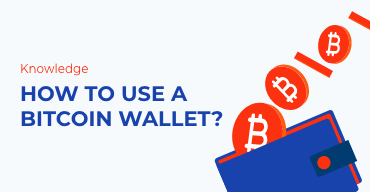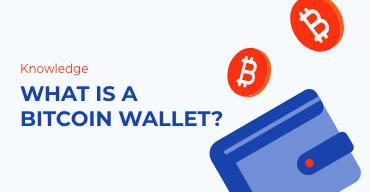The question “what is Ripple?” has various answers, depending on the segment asking it. Basically, Ripple is the generic term used to denote the company that first established the actual operative platform RippleNet and its inherent cryptocurrency, XRP.
Still, as mysterious as it sounds, the Ripple platform is in fact an extension of the Bitcoin blockchain or the Ethereum network, functioning as an open-source public ledger that facilitates digital transactions. The cryptocurrency, on the other hand, serves as a security token paid by users in order to prevent abuse or hacking.
Ripple Explained—History, Founders & Development
The earliest beginnings of the Ripple system date back to RipplePay, a company established in distant 2004. It was conceptualized to contend with the already existing industry of payment processing—banks, PayPal, and similar centralized services—by providing a decentralized network. In this basis, transactions were carried out based on mutual trust, and such a concept retained its presence all throughout Ripple’s evolutive process.
Ryan Fugger was responsible for the network illustrated above, while invention of the actual Ripple coin came some time later. More precisely, close collaboration between Jed McCaleb and Chris Larsen, along with Fugger as a Ripple expert, back in 2012 ultimately resulted in the foundation of OpenCoin.
This business venture continued to work and improve upon the idea of a decentralized network that helps facilitate the transfer of information and valuable goods in the most sustainable manner. This called upon the creation of the actual Ripple coin, the network system’s inherent cryptocurrency, which basically functioned as an intermediary between transaction points.
In a year, the company was renamed Ripple Labs Inc., maintaining most of the managerial structure, minus Fugger, who was already growing old for this vivant industry. This is when the real development kicked in—the system’s currency increased in value. While explained in further detail below, it’s important to mention that Ripple’s coin is seldom used for actual payments and predominantly serves security purposes.
Either way, Ripple continued to progress, due to its unique online payment processing solution, and successfully appealed to targeted institutions—banks and financial organizations looking to optimize these operations.
How Does Ripple Work?
In order to understand how Ripple actually works, it’s important that enthusiasts are initially able to make a distinction between the three different entities named at the beginning of the article. Nowadays, Ripple Labs is the company behind the Ripple payment processing protocol that operates specifically on RippleNet, using the inherent cryptocurrency, XRP, developed by its founders.
As complex as it sounds, we already learned about the company and the main developers behind the concept. All it takes is to understand Ripple’s blockchain system and its use of the XRP token.
With one down and two to go in answering what is Ripple, next is Ripple’s intended purpose. The sole fact that Ripple is a blockchain public ledger gives some initial introduction into the matter. This system or network, RippleNet, is intended to facilitate the transaction of any data or good from any one currency (dollar, euro, gold, oil) to another. What makes the Ripple blockchain transactions unique is that they allow users to practically create a mediating currency or use XRP to transact the funds.
Thus, the Ripple cryptocurrency serves as a mediating bridge currency between the sending and receiving parties. This allows users to send funds (say, $100) in dollars and receive them in a different item of value—gold, oil, or Bitcoin (the equivalent amount based on the value of these commodities or cryptocurrency). As you can see, the Ripple system and its currency do not distinguish between digital and fiat legal tender, and they additionally pack a range of many unique, beneficial features.
What Is XRP?
The prior introduction to XRP showed us that it is not as much of a payment-method cryptocurrency as it is a mediating one, serving as a universal exchange rate. This does not mean you can’t own Ripple as a currency. On the contrary, XRP can be owned and managed in e-wallets much like other coins of its nature.
In this line of thought, every Ripple user—bank or individual—should be aware of some features of the currency:
– Amount: The volume of the Ripple coin present in the world is pre-mined, made available by the system’s founding company Ripple Labs back when they first released the system. Just like a company that officially becomes available for public trading and releases a set number of shares denoting its complete ownership, the Ripple system created a set number of 100 billion XRP tokens. Currently, only 38% are in circulation, while the remaining 62% are kept by the issuing company.
– Scalability: Scalability and value are some of the most common cryptocurrency issues, but Ripple price variations and its transaction volume capacity are rather its strong suits. Despite the XRP acting as a mediator between any such payments, its wide distribution and minor fee, and its near-optimal electrical energy efficiency allow it to handle much bigger traffic volumes, ultimately matching Visa, since the middle of 2017.
– Purpose: The fact that XRP has a clear-cut purpose isn’t to say that Bitcoin and Ether are freely roaming their cryptocurrency blockchain. Still, this currency serves the payment processing of its ledger platform, Ripple, a much more clearly defined purpose, i.e., practical use.
Ripple vs Bitcoin
The Ripple blockchain ledger is somewhat based on the Bitcoin system, considering the latter is the first instance where such a platform has been invented and released. Nevertheless, due to the fact that each of these systems has its own function and purpose, they differ on a number of points, as illustrated below:
- Ownership: Bitcoin’s main rise to fame came as a result of the lack of an individual entity owning the system—it is completely decentralized and equally distributed across every “node” (computing machine). Circling back to what is Ripple—it’s important to address its disadvantages too. And this might be the main one: its centralized ownership under the sole company Ripple Labs Inc., which is in charge of releasing XRPs and holds about two thirds of all cryptocoins in their storage.
- Processing speed: Ripple definitely takes the lead when it comes to transaction processing speed. This system maintains a speed of 4 seconds per transaction, while Bitcoin can only achieve the same within an average time of 10 minutes.
- Transaction fee: Due to the lack of Ripple mining operations, the fees for XRP transactions are minor ($0.004), as opposed to Bitcoin ($40). After all, Ripple operations are verified by consensus, not mining, requiring less effort and causing minor expenditures, and thus charge lower fees.
- Energy cost per transaction: XRP transaction costs are practically minimal when it comes to the energy required, whereas Bitcoin transactions nowadays need about 250 kW per hour in order to process and validate transactions.
- Principle of operations: Bitcoin operations are performed using a proof-of-work algorithm, although other digital payment systems, such as Ethereum, are working towards replacing it with the more efficient proof-of-stake. Ripple XRP transactions, as mentioned earlier, are performed using mutual consensus.
- Number of transactions per second: The number of XRP transactions processed per second on the RippleNet is calculated at 1,500. Contrary to this, Bitcoin can only process up to 10 transactions in one second, on average.
- Coin supply: Bitcoin is capped at 21 million coins, but so far only about 16 have been mined and are in circulation. As for XRP cryptocoins, the whole of the 100 billion XRP have already been mined, but only 38% are currently in practical use. This is another major distinction between the two, mainly resulting from the original purpose of Ripple as a cryptocurrency, as opposed to Bitcoin’s.
- Inflation & deflation: The XRP as a currency can be considered deflationary, as a small amount of about 0.00001 XRP is destroyed per transaction to guarantee security and prevent malpractice. On the contrary, as the number of Bitcoin cryptocoins is estimated to reach its cap by year 2140, the currency will consequently undergo inflation.
Potential Uses of Ripple
The main goal of Ripple’s inventors was to create a payment processing system that would be able to perform transactions much faster, more cheaply, and more securely. For this purpose, this system uses its own token, the Ripple currency XRP.
What Is XRP Used for?
The token is used as a mediatory currency, a bridge between what is sent and what the recipient wants to obtain. Illustratively, it means that the sender may feel more comfortable using Canadian dollars, but the recipient would like to obtain some Bitcoins. The thing facilitating such a process of currency exchange is the XRP token, and multiple companies and payment processors have benefited from incorporating it into their operations, including even the best bitcoin exchanges.
Due to the low-cost and minimal maintenance and operative requirements, developers of the system needed to ensure that no hacker or malicious user would attempt malpractice. Instances of this include double spending of a specific amount of funds, as well as system blockades by overflow of requests. Users have the option to buy Ripple cryptocurrency and use it for
– Exchanges,
– Purchases,
– iGaming deposits (at online casinos and the likes).
The Future of Ripple
With a massive surge in traffic—4,000% by the first half of 2017—and the constant growth thereafter, Ripple is bound to progress even further. Currently, it has been used as a cross-border transactions processor by over 30 major financial corporations, including banks such as BBVA.
Hence, its goal of ultimately replacing SWIFT as a faster and less expensive payment processing solution is seen as fulfilling the intended Ripple definition—what it was initially meant to do. Predictions vary in terms of the value of its cryptocoin, XRP, but traffic volumes are definitely expected to rise as more and more establishments benefit from the network’s features.
On a final note, many interested parties are looking into the venture of Ripple investments, i.e., purchasing XRP amounts as a form of shares in the company. Regarding such endeavors, it is estimated that the investment may take longer to pay out, but should produce some amount of profit on a long-term basis.
FAQs
How much XRP does Ripple own?
The Ripple cryptocurrency XRP has been premined—the creators of the system released a limited amount of coins along with the inception of the system operations. There is no information regarding the absoluteness of this, as they may decide to mine more in the future. So far, 62 billion XRP are stored in their possession and have yet to be released for mass use, while 38% are already used for processed transactions.
How does one begin to invest in Ripple through its cryptocurrency, XRP?
Before getting into the matter of investing in Ripple, i.e., XRP, all future investors need to be aware of the fact that there is no such thing as a safe investment. All of these ventures carry a degree of risk for failure and payout, and the same applies to Ripple as it would to any fiat currency or real estate, for that matter. Interested parties can purchase or exchange this cryptocurrency for another currency, fiat or digital, and use it for daily investments or in a more long-term profit plan.
Is Ripple decentralized in its core structure?
The initial inventors and promoters of Ripple claim that the system is a decentralized blockchain ledger technology. Yet the fact that all its cryptocoins are issued by one sole entity proves the contrary. This matter has caused a major stir among the propagators of decentralized systems looking for ways to take the power away from major corporations. They claim that by catering to them, Ripple is doing the complete opposite.
When it comes to its creators’ main intention, what is Ripple?
The question of its creators’ main goal has been the topic of great debate. They claim that they want to replace companies like the global payment processor SWIFT. Nevertheless, Ripple is still far from providing full disclosure, which makes people doubt the true cause behind Ripple’s invention.





